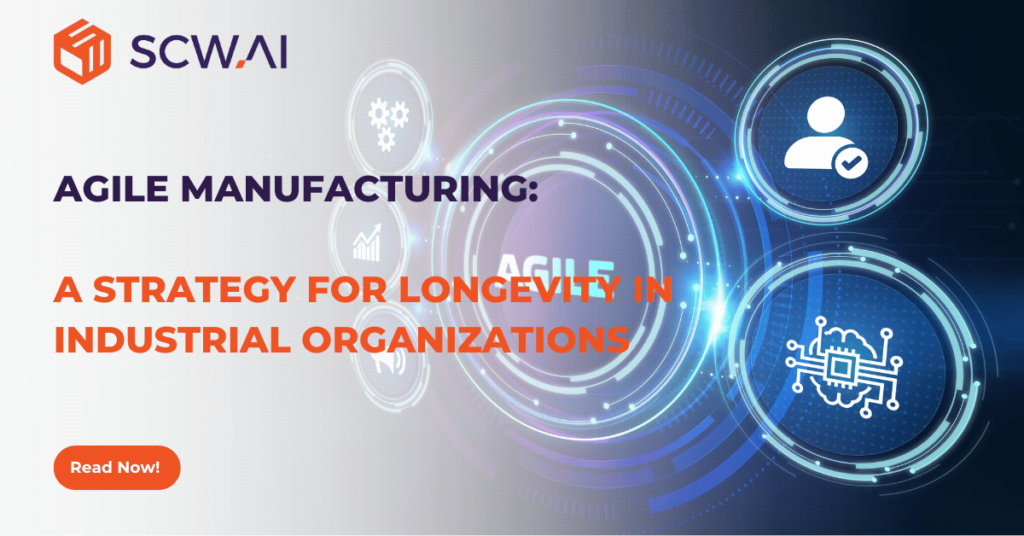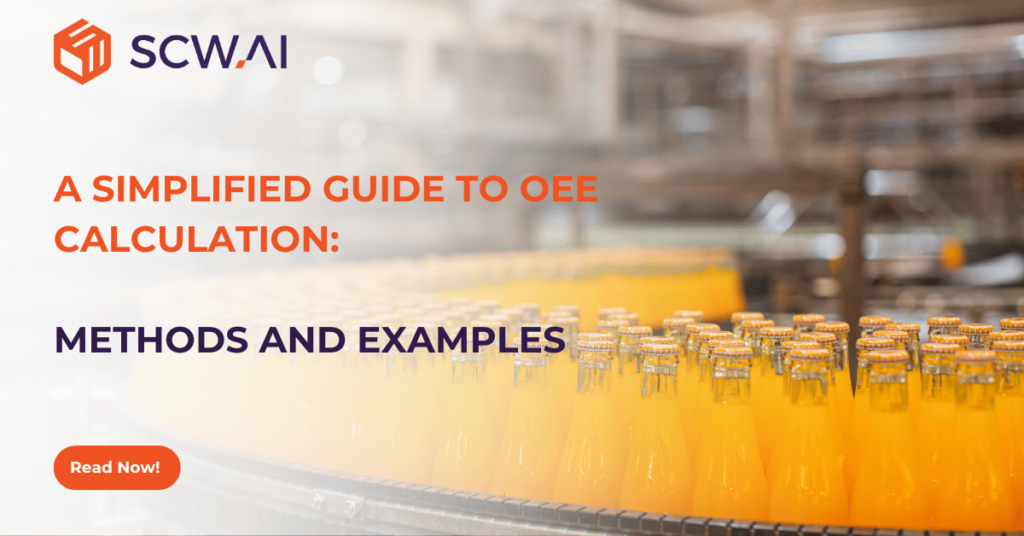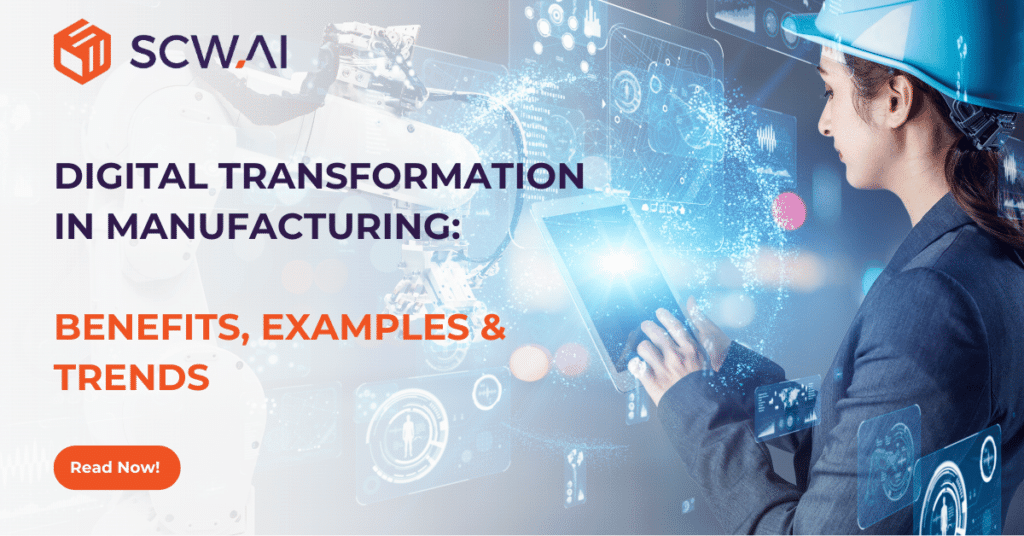Gartner’s 2023 AI Hype Cycle positioned generative AI at the “peak of inflated expectations,” suggesting a surge in interest and practical application for businesses. While organizations globally are adapting to this technology’s potential, many manufacturing companies haven’t yet harnessed generative AI for factory-specific uses beyond limited generic applications of ChatGPT.
In this article we provide in-depth information for factory leaders regarding generative AI in manufacturing. We will explore top industry-specific use cases, discuss the technology’s current limitations, and examine how generative AI will reshape the future of manufacturing work. Finally, we will show how SCW.AI can help you implement a custom generative AI model tailored to your unique factory needs, driving transformative change within your company.
What is Generative AI in Manufacturing
Generative AI (GenAI) is a branch of artificial intelligence that focuses on creating new solutions or doing ways of business rather than simply analyzing existing data or making predictions based on it. In the context of manufacturing, generative AI systems can improve production processes by generating new solutions and designs.
Generative AI systems have the capability to analyze vast amounts of historical data, identify patterns, and receive user feedback to enhance system performance. This iterative process of feedback allows for continuous improvement. From this perspective, it is possible to consider generative AI models as the ultimate working assistant, capable of interpreting vast amounts of input. Therefore, the quality of output depends on the data and feedback provided.
Top 5 Generative AI Use Cases in Manufacturing
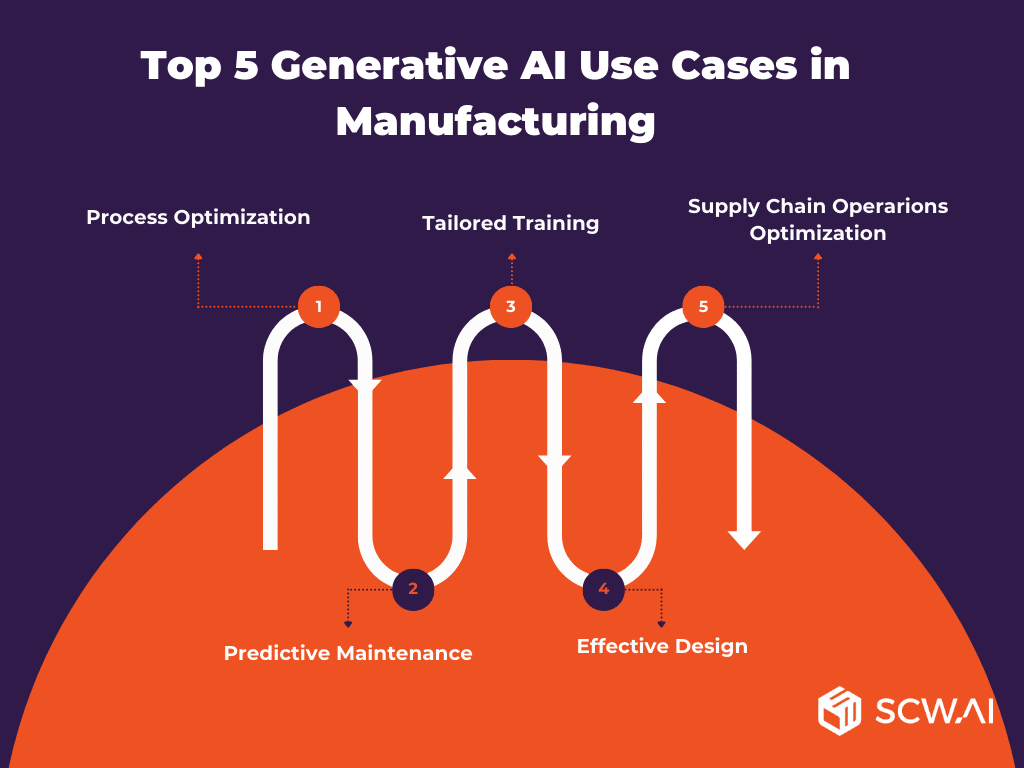
1. Process Optimization with Realistic Simulations
Generative AI enables manufacturers to optimize processes through realistic simulations. This manufacturing application has similarities with leveraging digital twins. Manufacturers can provide historical data about the configuration of production lines and manufacturing KPIs such as OEE, takt time, OTIF score, carbon footprint, and more. By analyzing the relationship between KPIs and line configuration, such as the speed of the machines, generative AI models can come up with new configurations that were never tried before and:
- Minimize waste
- Improve throughput
- Lessen cycle time
- Reduce carbon footprint, and more.
Data generated by generative AI can also be utilized to simulate various scenarios, aiding in finding new ways of producing goods without putting any risks on the real production process, thanks to simulations.
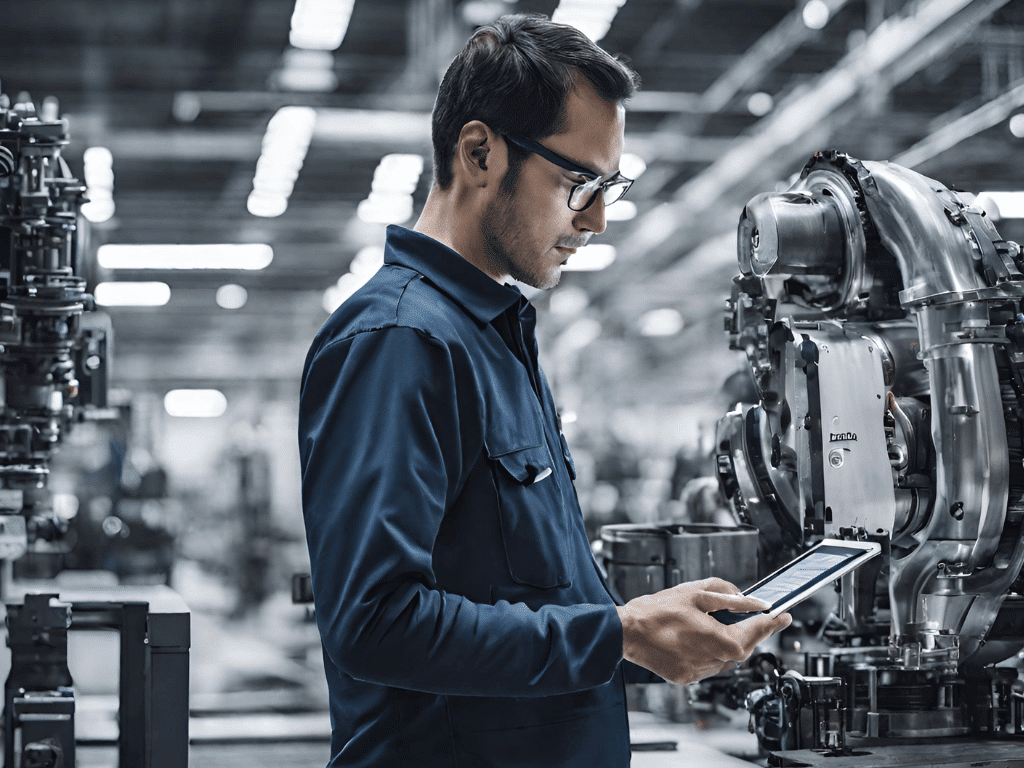
2. Generative AI Driven Predictive Maintenance
Generative AI driven predictive maintenance is another application of technology for manufacturers. Through the utilization of synthetic data in generative AI-driven predictive maintenance, manufacturers can make informed decisions, optimize maintenance schedules, and ensure the uninterrupted operation of critical machinery.
In the context of predictive maintenance, synthetic data allows generative AI systems to simulate various operating conditions and scenarios, providing valuable insights into machinery behavior and performance.
For instance, in one simulation, the generative AI system runs the assembly line at its current speed and identifies that the machines require maintenance every three days, resulting in a five-hour downtime for repairs. However, through iterative trials and errors facilitated by synthetic data, the system discovers an optimization opportunity.
By reducing the machine speed by 7% in the simulation, the generative AI system predicts that the maintenance interval extends to every five days, with downtime reduced to only two hours. This insight enables the maintenance team to proactively adjust machine settings in the real-world scenario, minimizing downtime and maximizing operational efficiency.
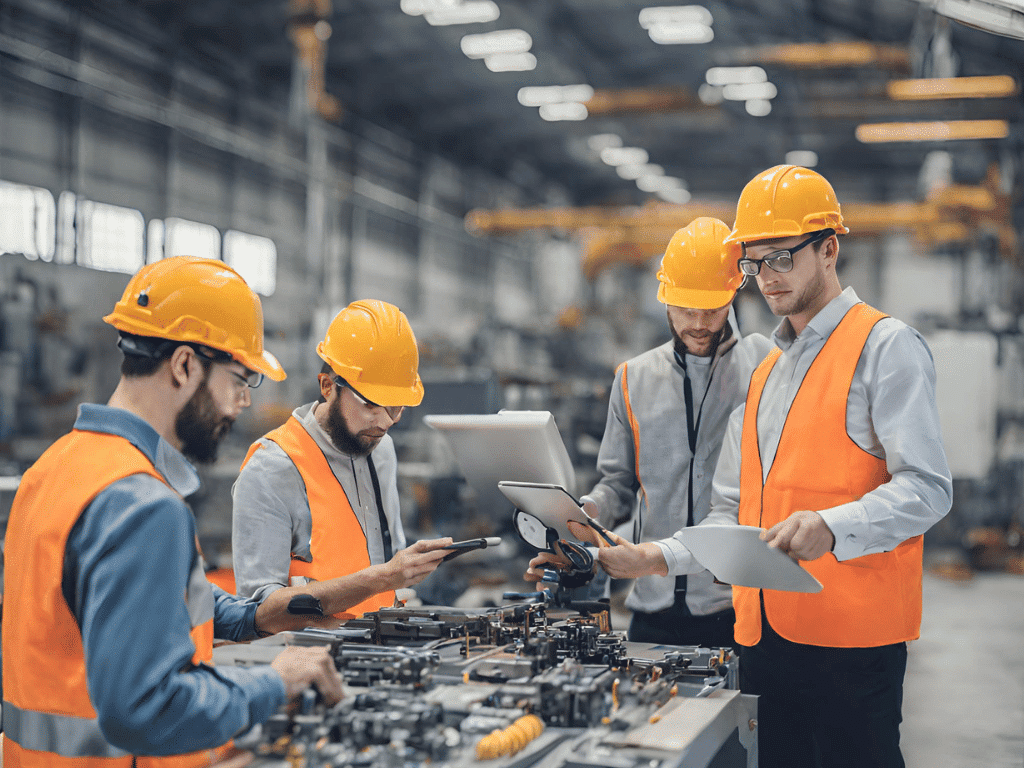
3. Tailored Training Content for Each Labors
Manufacturers are grappling with a shortage of skilled labor, exacerbated by factors such as an aging workforce and evolving job requirements. In this challenging landscape, investing in the training and upskilling of existing employees is essential for maintaining productivity and competitiveness in the market.
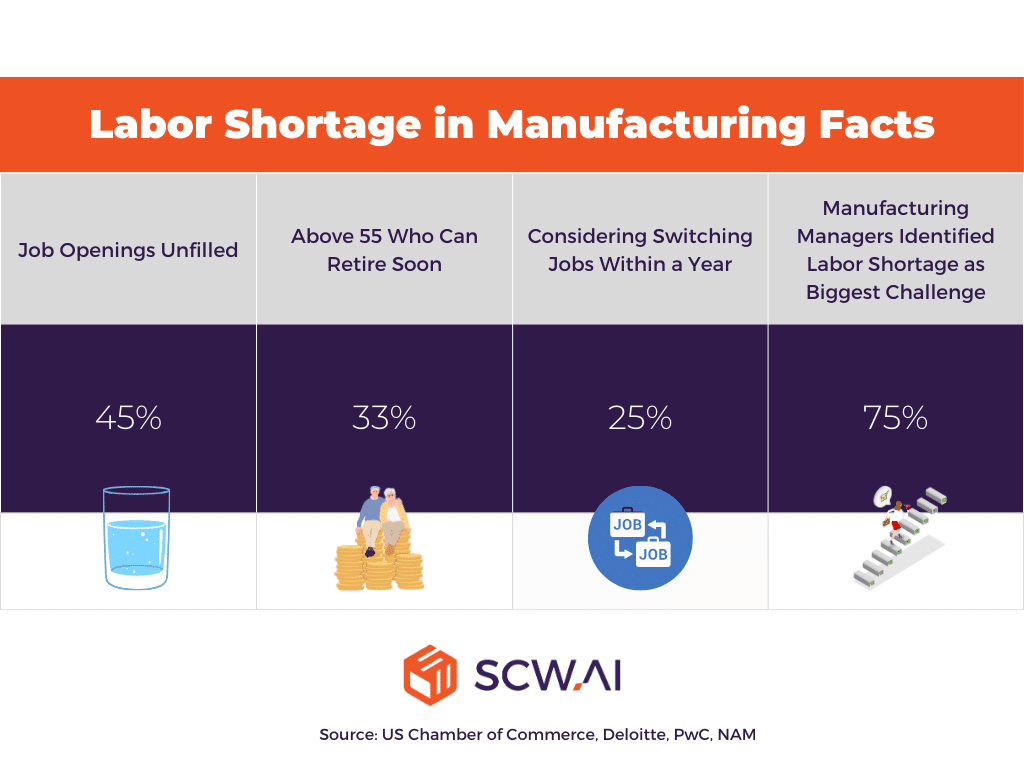
Generative AI has the capability to design customized training programs and content that maximize the return on training investment. By analyzing standard operating procedures (SOPs), compliance documents, batch records, and logbooks, generative AI can understand the rules and regulations that must be obeyed within the manufacturing environment.
Generative AI takes into account the unique roles and responsibilities of each individual within the workforce to generate personalized and engaging training modules. Training content can take variety of forms such as:
- Videos
- Documents
- Images
- And questionnaires, tailored to suit different learning styles and preferences.
Furthermore, generative AI enables interactive learning experiences through chat interfaces, allowing individuals to engage with AI-powered assistants like ChatGPT. Employees can receive real-time feedback, ask questions, and seek clarification on areas where they aim to improve themselves.
With the integration of digital twins and virtual reality (VR) or augmented reality (AR) tools, training programs can transcend traditional methods and immerse the workforce in virtual simulations of real-world scenarios. This experiential learning approach enables employees to gain hands-on experience in a risk-free environment, polish their skills and enhance their proficiency.
4. Decrease Time to Market with Effective Designing
Generative AI is offering the ability to streamline the design process and accelerate product development cycles while also addressing sustainability concerns.
Generative AI leverages advanced algorithms to generate design ideas that optimize various factors, including:
- Weight
- Product performance
- Choice of raw materials
- Product carbon footprint
- Recyclability
- And cost.
Generative AI goes beyond conceptualizing ideas by providing visual representations of design concepts in the form of images and 3D models. Moreover, generative AI guides workers through the manufacturing process by providing step-by-step instructions and insights derived from the design specifications. This seamless integration of design and manufacturing ensures that the envisioned products are brought to life efficiently and accurately.
Generative AI plays a pivotal role in designing greener products, which are increasingly essential for compliance with sustainability regulations and meeting customer expectations. According to the European Commission, approximately 80% of a product’s carbon footprint is determined during its design phase. By leveraging generative AI to optimize design parameters, manufacturers can minimize environmental impact and contribute to a more sustainable future.
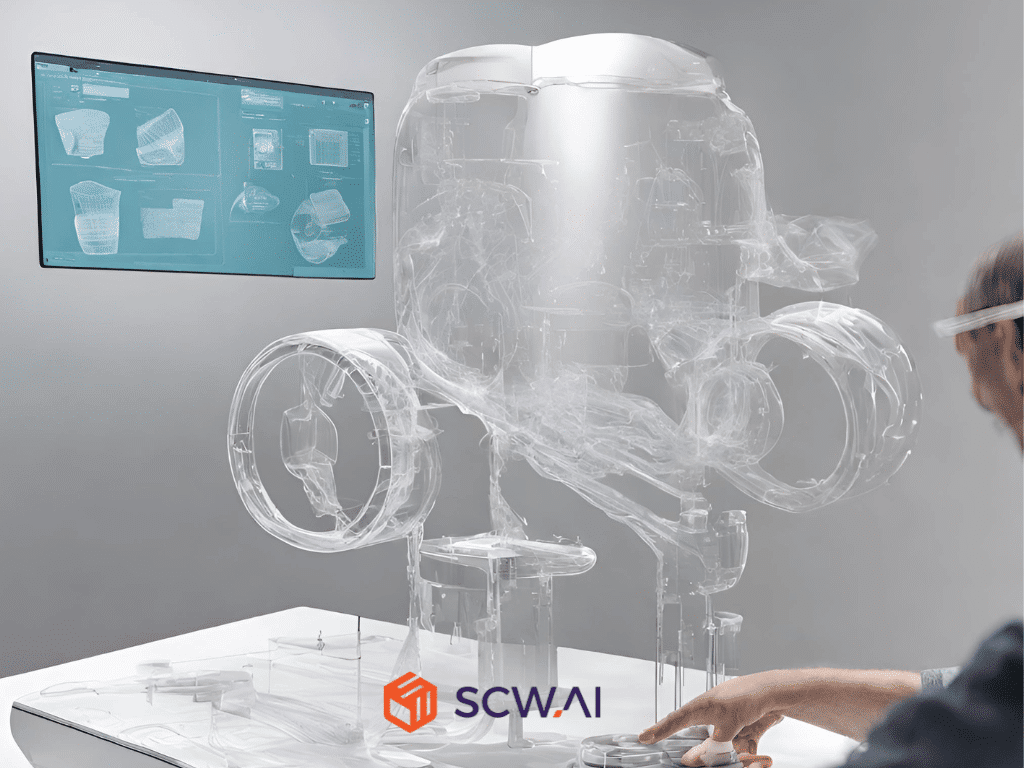
5. Improve Supply Chain Operations
Generative AI can optimize supply chain operations by enhancing inventory management, determining optimal routing strategies, and predicting market demand. By providing valuable insights and feedback, these systems enable manufacturers to streamline operations and improve overall efficiency.

Risks of Generative AI in Manufacturing
While generative AI presents numerous opportunities for innovation in manufacturing, it is essential to acknowledge and mitigate associated risks as follows:
- Terminology Outpaced Business Rationality: Often, our clients express interest in generative AI without having a specific business case in mind to apply the technology and improve certain KPIs. This is likely related to a lack of understanding about generative AI and its potential use cases for factories. However, it is important to remember that technology is merely a tool for enhancing results. Therefore, if you need to learn more about GenAI in manufacturing, do not hesitate to consult firms like SCW.AI.
- Diversification of AI Models: Generative AI is not the sole AI model available to manufacturers. Other AI models, such as scheduling optimization algorithms, quality control systems, and line monitoring tools, also play crucial roles in enhancing efficiency and productivity within manufacturing operations. Focusing solely on generative AI may overlook the diverse range of applications and benefits offered by these alternative AI models.
- Dependency on User Feedback: The success of generative AI models heavily relies on the feedback and guidance provided by users. However, limitations in user knowledge or experience can adversely impact the quality and accuracy of generative AI outputs.
- Data Bias Considerations: Generative AI systems are susceptible to biases present in the training data, potentially leading to biased or unfair outcomes. Therefore, over relying on generative AI models can be dangerous for the manufacturers.
- Data Security and Privacy Concerns: The utilization of generative AI involves the processing and analysis of vast amounts of data, raising concerns regarding data security and privacy. Manufacturers must implement robust data protection measures or consider data privacy of the technology vendors they are partnering with.
Future of Work in Factories with Generative AI
The integration of generative AI in manufacturing will undoubtedly reshape the future of work in factories. Engineers need to learn about prompting to effectively guide these tools toward better outcomes. They also need to understand generative AI models’ limitations and drawbacks to use them wisely. Therefore, upskilling and reskilling the workforce will be necessary.
It is also worth mentioning that the utilization of new technologies may render some jobs obsolete due to automation, but it also creates new occupations. For instance, just two decades ago, there were no social media marketers, blockchain developers, or business analysts. Similarly, in the near future, new job occupations will flourish in manufacturing. To seize the opportunity, factory leaders should not hesitate to utilize their workforce in new ways.
How Can SCW.AI Assist Manufacturers for Their GenAI Initiatives
SCW.AI helps manufacturers deploy custom generative AI models for their factories. These models act as digital twins, realistically simulating different production configurations. This enables factory leaders to identify ways to:
- Increase production without raising costs
- Reduce lead times
- Minimize carbon footprint and more.
Furthermore, SCW.AI’s generative AI models equip your factories with advanced predictive maintenance capabilities, significantly improving your runtime.
To learn more about how we can support your generative AI investment for your factory and find out the complete power of our Digital Factory Platform that provides end to end digital transformation you can book a demo with us now!
